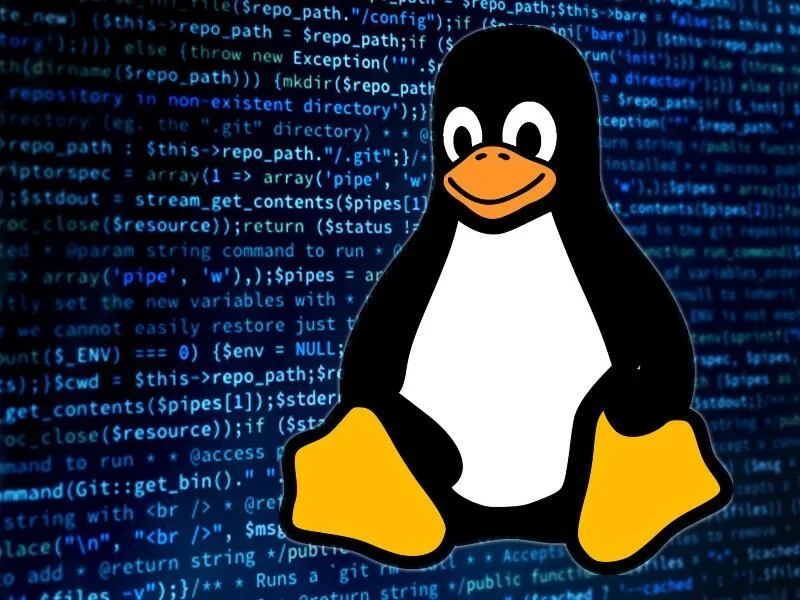Linux Beginner’s Guide!
Aug 9, 2022
Linux

Linux commands, scripting, services and applications, access control, process control, user management, database management, web services and similar topics will be covered.
Part 1: Introduction to Linux and OS Installations
- What is Linux? How Does Linux Work?
- Basic Guide to Linux Boot Process
- Linux Directory Structure and Key Files
- How to Install for Free
- Installing VMware Workstation to Test Different Linux Distributions
- Best Linux Distributions for Beginners
Part 2: Essential Linux Commands
ls– List Files and Directoriescd– Navigate Between Directoriespwd– Check Current Working Directorydir– List Directory Contentsmkdir– Create New Directoriesrmdir– Remove Directoriesmv– Rename or Move Files/Directoriescp– Copy Files/Directoriestouch– Create New Filesfind– Locate Files/Directoriescat– Display File Contentsdf– Check Disk Space Usagedu– Monitor File/Directory Disk Usagetar– Create, Extract, and List Archive Filesgrep– Search Patterns/Strings in Text Filesln– Create Hard/Symbolic Linksalias– Create Command Shortcutsecho– Print Text to Terminaltail– Display Last 10 Lines of a Filetop– List Running Processesps– List Processes with PIDskill– Terminate Processes by PIDuniq– Remove Duplicate Lines
Part 3: Fundamentals of Advanced Linux Commands
- Must-Know
lsCommand Variations - Efficient File Management with
head,tail, andcat - Counting Lines/Words/Characters Using
wc - Basic File Sorting with
sort - Advanced File Sorting Techniques
pydf: Alternative Disk Usage Tool todf- Monitoring RAM Usage with
free - Advanced File/Directory Renaming with
rename - Printing Text/Strings Using
echo
Part 4: More Advanced Linux Commands
- 20 Useful Commands for Windows-to-Linux Migrants
- 20 Intermediate-Level Commands
- 20 Expert-Level Commands
- 24 Fun Terminal Commands to Try
- 6 Amusing Linux Commands (Terminal Fun)
- 51 Lesser-Known Useful Commands
- Dangerous Commands You Should NEVER Run
Part 5: User, Group, and Permission Management
- Adding Users with
useradd - Modifying User Attributes with
usermod - Advanced User/Group and File Permission Management
suvs.sudo– Configuration Guide (Advanced)- Monitoring User Activity with
psacct/acctTools
Part 6: Linux Package Management
- YUM (CentOS/RHEL/Fedora)
- RPM (CentOS/RHEL/Fedora)
- APT-GET/APT-CACHE (Debian/Ubuntu)
- DPKG (Debian/Ubuntu)
- Zypper (SUSE/openSUSE)
- Advanced Package Management Comparison
- 27 Essential
DNFCommands (YUM Fork)
Part 7: System Monitoring & Cron Scheduling
- Process Monitoring with
top - Process Management via
kill,pkill,killall - File Process Management with
lsof - Job Scheduling with
cron - 20 System Performance Commands
- 13 Performance Monitoring Tools
- Nagios Monitoring (Advanced)
- Zabbix Monitoring (Advanced)
- Shell Scripts for Network/Disk/Uptime/RAM Monitoring
Part 8: Archiving/Backup/Recovery
Archiving/Compression:
- Using
tarfor File Archiving - Handling RAR Files in Linux
- 5 Compression Tools
- Advanced Archiving/File Attributes
Backup/Sync:
rsyncfor Local/Remote Sync- File Transfer with
scp Rsnapshot(Rsync-Based Backups)- Advanced Web Server Sync
Recovery:
- System Backup/Restore with Redo Backup
- Disaster Recovery via Mondo Rescue
- File Recovery Using
Scalpel - 8 Disk Cloning Tools
Part 9: Filesystem & Network Storage
- Ext2/Ext3/Ext4: Creation/Conversion
- Understanding Linux Filesystems
- Advanced FS Configuration
- NFSv4 Server Setup (Advanced)
- Mounting Local/Network (Samba/NFS) FS
- BtrFS Management (Advanced)
- GlusterFS Intro & Setup (Advanced)
Part 10: LVM Management
- Flexible Storage with Logical Volume Manager
- Extending/Reducing LVM Volumes
- Snapshots and Restoration
- Thin Provisioning
- I/O Striping Across Multiple Disks
- Migrating Partitions to New Logical Volumes
Part 11: RAID Management
- RAID 0 (Striping) with
mdadm - RAID 1 (Mirroring) Setup
- RAID 5 (Distributed Parity)
- RAID 6 (Double Parity)
- RAID 10 (Nested) Configuration
- Expanding Arrays and Replacing Failed Disks
- Merging Partitions as RAID Devices
Part 12: Service Management
- Auto-Starting Services
- Disabling Unwanted Services
- Managing
systemdwithsystemctl - Boot Process and Service Management
Part 13: Security & Firewalls
Security:
- Linux Security Tools
- 25 Server Hardening Tips
- 5 SSH Security Best Practices
- GRUB Password Protection
- SSH/MOTD Banner Security
- Auditing with Lynis
- ACLs for File Security
- Network Performance/Security Auditing
- SELinux MAC Basics
Firewalls:
- IPTables Fundamentals
- Configuring IPTables
- FirewallD Setup
- Essential FirewallD Rules
- UFW (Uncomplicated Firewall)
- Shorewall (High-Level Config)
- CSF (ConfigServer Firewall)
- IPFire Distribution
- pfSense 2.1.5 Setup
- 10 Open-Source Firewalls
Part 14: LAMP Stack
- Ubuntu 14.04 + LAMP Setup
- Building a Web Server
- Apache Virtual Hosts (IP/Name-Based)
- SSL with Name-Based Hosting
- DDoS Protection via
mod_security/mod_evasive - 13 Apache Security Tips
- Syncing Web Servers with
rsync - Varnish (HTTP Accelerator) + Load Testing
Part 15: LEMP Stack
- LEMP Installation
- FcgiWrap Setup for Perl/Ruby/Bash
Part 16: MySQL/MariaDB
- Basic Database Commands
- 20
mysqladminCommands - Backup/Restore Procedures
- Master-Slave Replication
- Monitoring with
mytop/mtop - Performance Tuning
Part 17: Bash Scripting Basics
- Understanding Shell Scripting
- 5 Beginner Scripts
- BASH Programming Fundamentals
- Math in Bash
- Calculating Expressions
- Writing Functions
- Advanced Function Techniques
- Working with Arrays
- Variable Usage
- Nested Variables & Predefined BASH Variables

